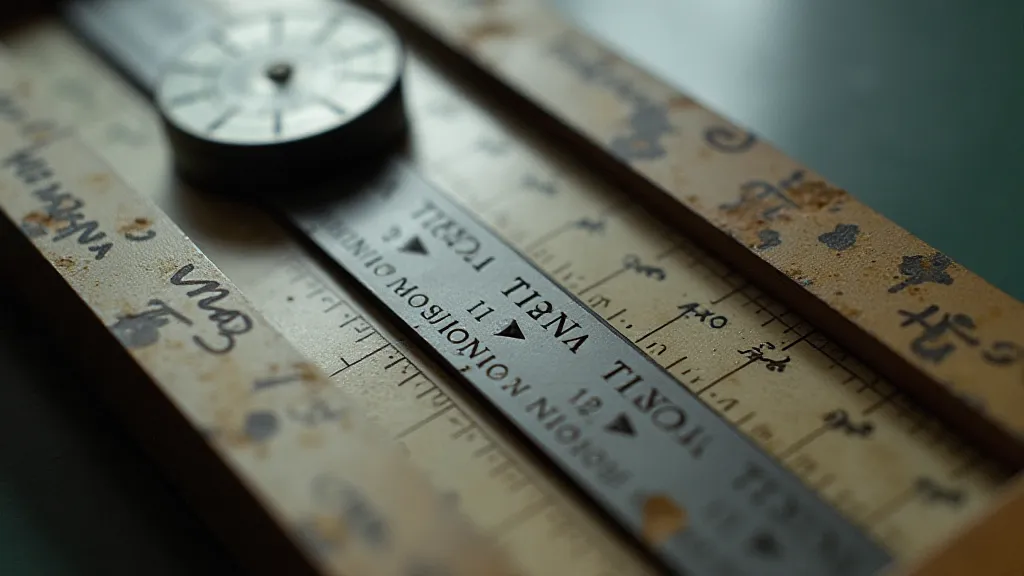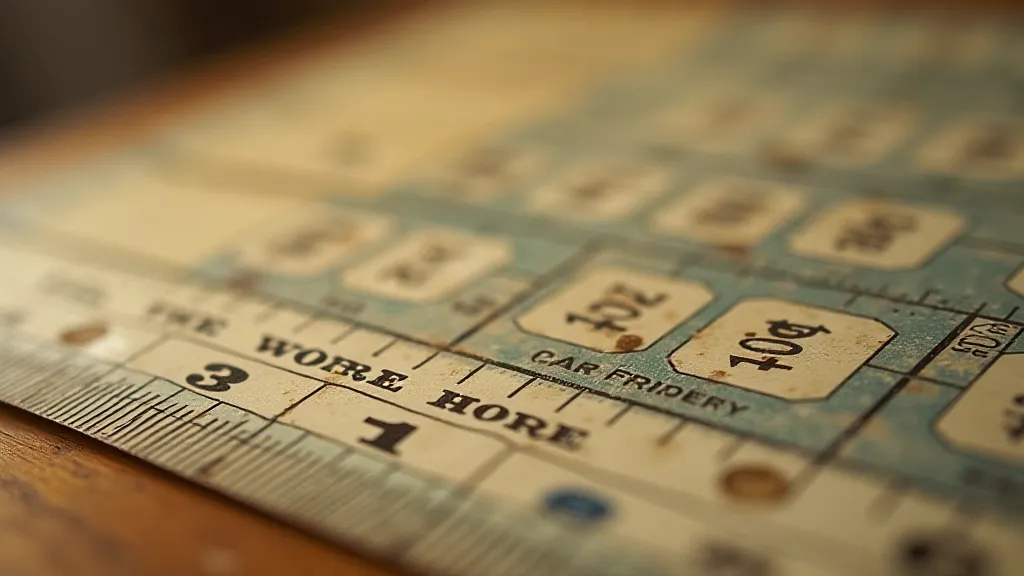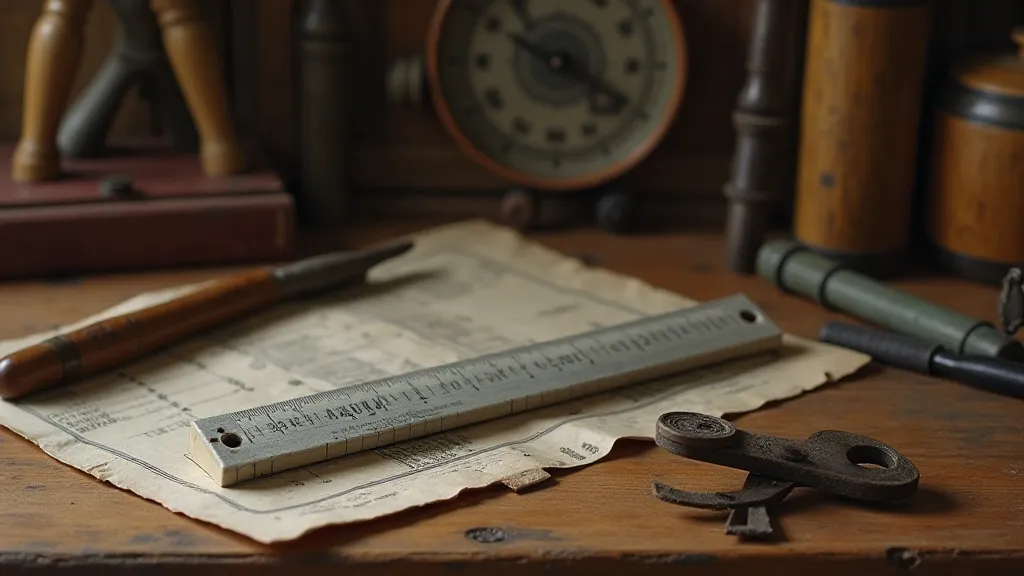Imprints of Thought: Discovering the Hands that Operated the Slide Rule
There's a quiet beauty to a well-used slide rule. It isn's the gleaming perfection of a brand-new tool, untouched by labor. It’s a beauty born of utility, etched into the very scales and runners by the countless calculations it facilitated. Holding one in your hands isn't just grasping a piece of engineering history; it’s feeling a connection to the minds that relied on it, a tangible link to a world of problem-solving and ingenuity. It’s a conversation across decades, whispered through wear marks and faded inscriptions.
Before the digital age, before pocket calculators became ubiquitous, the slide rule was the engineer's companion, the architect’s assistant, the mathematician’s muse. It was a core tool for anyone engaging in quantitative disciplines, from rocket scientists to construction workers. The need to understand and manipulate complex calculations, often under pressure and with limited resources, fostered a particular kind of focused thought, a precision of approach that I believe is subtly reflected in the instruments they wielded. The impact of these tools stretched far beyond mere computation; they fostered a culture of precision, as explored in more detail in "The Scribe's Companion: How Slide Rules Fostered a Culture of Precision".
I recall my grandfather, a civil engineer who spent his career designing bridges across the American Midwest. He rarely spoke of his work, considering it simply a job. Yet, I remember seeing his slide rule – a sturdy Pickett Model N – perpetually on his workbench, a silent witness to countless designs. It was worn, of course. The scales were scuffed, the cursor a little loose, and there was a faint, almost indefinable scent of oil and aging wood. It wasn't just an object to him; it was a mental extension, a trusted colleague in the often-demanding world of civil engineering.

The Language of Wear: Deciphering the User's Story
When I started collecting and restoring vintage slide rules, I initially focused on mechanical restoration – cleaning, lubricating, replacing broken parts. But I soon realized that the true value of these instruments wasn't solely in their functionality, but in their history. The wear patterns on a slide rule tell a story. A heavily worn ‘C’ scale, for example, might indicate a frequent reliance on proportional calculations – common in areas like geometry and scaling. A constant pressure mark on the runner could suggest a meticulous, perhaps even anxious, approach to calculation.
The type of wear itself can reveal clues. Smooth, even wear usually points to consistent use. Concentrated wear in specific sections might show where a user frequently referenced a particular formula or scale. Sometimes, you’ll find evidence of hasty scribbles, hastily erased corrections, or even little doodles – a glimpse into the user’s working process and perhaps even their personality. These aren't just imperfections; they're records of thought.
I’ve encountered slide rules with meticulous engravings of names and dates. These were often gifts, treasured possessions passed down through generations. Others bear the marks of harsher treatment – drops, impacts, and the general wear and tear of a tool used on a construction site or in a workshop. These stories don't diminish the instrument's value; they enhance it. They transform it from a mere calculating device into a historical artifact imbued with human context.
Craftsmanship and the Pursuit of Precision
The slide rules that have survived to this day are testaments to a different era of manufacturing. While mass production was already underway, there was still a greater emphasis on quality and durability. Many slide rules were crafted from hardwoods like mahogany or walnut, carefully selected and precisely machined. The scales themselves were printed with remarkable accuracy, a feat of engineering in their own right. The meticulous attention to detail is evident in every component, a far cry from the often-disposable nature of modern electronics.
Take, for instance, a Pickett slide rule. The quality of the printing, the precision of the runner, the satisfying click of the cursor – these were all hallmarks of a commitment to excellence. The craftsmen behind these tools understood that they were providing engineers and mathematicians with more than just a calculating device; they were providing them with a tool that would shape their thinking and contribute to their success. This sense of responsibility is reflected in the quality of the finished product. The slide rule, at its core, played a critical role in democratizing access to engineering concepts and calculations, something further examined in "A Tangible Universe: Slide Rules and the Democratization of Engineering".

Restoration: Preserving the Echoes of Thought
Restoring a vintage slide rule isn’t about bringing it back to a pristine, factory-fresh condition. It’s about preserving its integrity, its character. Cleaning is essential, of course, to remove years of accumulated grime. Lubrication restores smooth operation. Broken parts are carefully repaired or, if necessary, replaced with period-correct components. But the goal is always to retain the evidence of its past – the wear marks, the faded inscriptions, the subtle imperfections that tell its story.
I see myself less as a restorer and more as a custodian. My role is to protect these instruments, to ensure that they continue to be appreciated and understood for generations to come. It’s a privilege to handle these artifacts, to feel the connection to the minds that shaped them, and to share that experience with others. Each slide rule has a unique history, a unique personality. And it’s my responsibility to help those stories endure.
The process allows me to contemplate the changes in engineering practice and how these tools shaped the world. The decline of the slide rule’s daily usage isn’t simply about technological advancement; it’s a reflection of a shift in the way we approach problem-solving. Perhaps, in some ways, we have lost something – a certain deliberate pace, a deeper understanding of the underlying principles. The slide rule, in its simplicity, forced a level of mental engagement that is often absent in today's digital age. For those involved in fields requiring precise spatial calculations, the slide rule offered invaluable assistance, as detailed in "The Cartographer's Compass: Slide Rules and the Pursuit of Spatial Understanding."

The Enduring Legacy and Shifting Perspectives
The slide rule's reign as a primary computational tool was relatively short, but its impact on engineering and mathematics is undeniable. It wasn't merely a calculator; it was a teacher, a mentor, and a gateway to a deeper understanding of quantitative principles. The very act of using a slide rule – the deliberate manipulation of scales, the careful estimation, the verification of results – fostered a level of mental acuity often absent in today's digitally-driven world. There's a certain elegance and satisfaction in arriving at an answer through the precise movements of these instruments, a satisfaction that transcends the mere result.
Consider the shift in educational practices. The slide rule wasn's just a tool handed to students; it was integrated into the curriculum, fostering problem-solving skills and a foundational understanding of mathematical concepts. The reliance on physical manipulation and tactile learning created a different kind of engagement, forcing students to actively participate in the computational process. This contrasts sharply with the 'black box' nature of many modern calculators and software programs.
Furthermore, the slide rule promoted a culture of precision and accuracy. Errors weren't simply brushed aside with the press of a button; they demanded careful scrutiny and a thorough understanding of the underlying principles. This fostered a sense of responsibility and a commitment to excellence that extended beyond the computational task itself. It instilled a methodical approach to problem-solving that is applicable to a wide range of disciplines.
The prevalence of slide rules also fostered a sense of community among engineers and mathematicians. They weren't isolated individuals working in silos; they were part of a larger network of practitioners who shared a common tool and a common understanding. The slide rule served as a tangible symbol of this shared identity and a catalyst for collaboration.
While digital tools undoubtedly offer greater speed and complexity in calculations, they also risk diminishing our capacity for critical thinking and problem-solving. The slide rule, in its simplicity, forces us to slow down, to think carefully, and to engage with the underlying principles. Perhaps, in a world increasingly dominated by algorithms and automation, there's something to be learned from this deliberate pace and this deep engagement.
A Legacy of Ingenuity
Vintage slide rules are more than just antique tools; they are tangible links to a bygone era of engineering ingenuity. They are reminders of the power of human intellect, the importance of precision, and the enduring beauty of craftsmanship. By preserving and appreciating these instruments, we not only honor the past, but also gain a deeper understanding of the present and inspire future generations to embrace the challenges of innovation with creativity and thoughtful rigor. The imprints of thought remain, etched into the scales, whispering stories of the hands that once guided them, and urging us to learn from their legacy.





